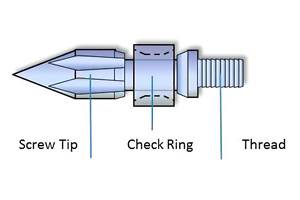GW Plastics Bets on Metal 3D Printing
Conformal cooling is goal of big investment at U.S. mold facility.
In response to growing demand in its global medical-device and drug-delivery ´óĎó´«Ă˝, precision custom molder GW Plastics, Bethel, Vt., has made a substantial investment in 3D metal printing at its Royalton, Vt., captive moldmaking facility. The purpose is to build injection molds with conformal cooling for faster cycles.
GW is one of only a handful of precision mold builders that have invested in this technology. “We are in the precision molding ´óĎó´«Ă˝, and cycle time is paramount. We see it as in our best interest to lead the charge into 3D metal printing and conformal cooling,” says Timothy Holmes, v.p. of engineering.
“That means faster cycles and better part quality through more predictable part shrinkage and warpage, so we won’t have to design molds with deliberate distortions to counteract shrink and warp. Ultimately, that will mean faster time to market for our customers.”
GW Plastics has invested over $2 million in its Royalton mold facility over the last 12 months to support R&D andexpand capacity. About half that amount went into a “hybrid” machine that both laser sinters metal powders and performs finish machining—“as good as any CNC,” says Holmes—as well as an environmentally enclosed room for the machine that has controlled humidity and protects the valuable metal powder—which is reused after every part build—from contamination.
“Our vision for metal 3D printing,” says Holmes, “is selective use of this technology for geometry-dependent conformal cooling.” GW Plastics previously used an outside supplier to produce 3D printed metal mold components with conformal cooling, which it has tested for up to 100,000 cycles to establish their durability under injection molding pressures. Cycle-time savings with these test molds averaged 25-30%, according to Holmes.
Other advantages of 3D printing are parts consolidation in mold building. Optimizing cooling in conventionally machined molds, Holmes explains, can require assembly of multiple components using o-ring seals and special high-conductivity mold materials.
Metal 3D printing can eliminate all that. What’s more, Holmes points out, 3D printing eliminates drilling holes for cooling, ejectors, etc., which can be one of the more expensive operations in mold building.Holmes also notes that in the last five years he has seen a “vast improvement in steel selection for 3D printing,” including grades that provide a higher-quality finish than before. And more are coming, he adds, such as improved grades of stainless steel.
Despite all these advantages of metal 3D printing, Holmes states, “I wouldn't want to use it for everything.” Rather than “grow” entire cores and cavities from sintered metal powder, he targets the technology for inserts in critical areas. The reason, he says, is that metal 3D printing is “a little more expensive than conventional machining, but the payback is certainly worth it.”
One factor is the metal powders, which cost more than conventional mold steels. Another factor is the additional engineering analysis required—“a lot more flow and cooling analysis”—to design metal printed mold components. Although the time to “grow” the laser-sintered metal part and machine it to a rough finish is about the same as for conventional machining, Holmes notes, what adds time and cost are secondary operations on the printed metal parts, such as removing support structures. The net result is 20-25% additional manufacturing time for printed metal parts.
“We’ve only had the metal 3D printing machine for a few months, and this is still something of an R&D project,” Holmes says. There’s a lot to learn, such as being able to predict precisely the shrinkage and distortion of printed metal parts. Long-term durability in molding also has yet to be established, but Holmes is confident that printed metal parts will be able to hit the million-cycle benchmark. In any case, printed metal inserts can be replaced by growing new ones. GW Plastics also recently purchased a 3D plastic printer.
Although it is now used mainly to produce “show and tell” parts for product development, Holmes can foresee printing plastic cavities and cores to mold hundreds of parts for prototyping.
Related Content
Got Streaks or Black Specs? Here’s How to Find and Fix Them
Determining the source of streaking or contamination in your molded parts is a critical step in perfecting your purging procedures ultimately saving you time and money.
Read MoreICYMI: January Roundup
In case you missed it, here’s a short recap of the articles that our readers are taking note of.
Read MoreICYMI: May Roundup
May was a busy month, especially with the buzz coming out of the Extrusion Conference. Here’s a quick look at the top articles from May you might have missed.
Read MorePlastics Technology Year in Review: Your Favorite Reads of 2024
A year-end review of the top stories showcasing industry trends, advancements and expert insights. Revisit the articles that captured the attention of the plastics community.
Read MoreRead Next
For PLASTICS' CEO Seaholm, NPE to Shine Light on Sustainability Successes
With advocacy, communication and sustainability as three main pillars, Seaholm leads a trade association to NPE that ‘is more active today than we have ever been.’
Read MoreBeyond Prototypes: 8 Ways the Plastics Industry Is Using 3D Printing
Plastics processors are finding applications for 3D printing around the plant and across the supply chain. Here are 8 examples to look for at NPE2024.
Read MoreLead the Conversation, Change the Conversation
Coverage of single-use plastics can be both misleading and demoralizing. Here are 10 tips for changing the perception of the plastics industry at your company and in your community.
Read More













